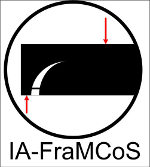|
|
|
Mini Symposia > MS6 Micro-nanoscale models and experimentsMS6: Micro-nanoscale models and experiments Organiser: M. Vandamme (matthieu.vandamme@enpc.fr) Concrete is heterogeneous at a variety of scales: its macroscopic properties in general -and its damage, cracking and fracture properties in particular- are the macroscopic expression of the mechanical properties of its phases, and of how those phases are organized in space (i.e., the microstructure). At a smaller scale, the properties of the phases are governed by atomistic features. Progresses in the use of both experimental and modeling techniques for the study of the smaller scales have recently been astonishing. Experimentally, we can measure mechanical properties at the sub-micrometer scale (e.g., with nanoindentation, nanoscratching, ...), resolve microstructures to always finer scales (e.g., with FIB-SEM, TEM, X-ray micro/nano-tomography, ...), or even combine those techniques to observe samples under solicitation. In terms of modeling, atomistic simulations have enabled a real breakthrough in the understanding of the physical origin of mechanical properties. Aiming at engineering application, those approaches need to interact with the larger scales (e.g., through homogenization techniques, lattice models, coarse-grained models, ...). This minisyposium is dedicated to recent efforts to characterize experimentally and/or model (may it be numerically or analytically) features (such as mechanical properties or microstructure, and their evolution) relevant to damage, cracking and fracture of quasi-brittle materials, at all scales smaller than the macroscopic scale of the engineer, but also in interaction with this latter.
|


